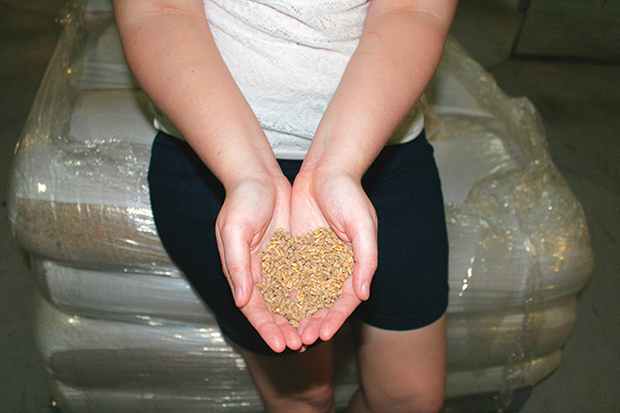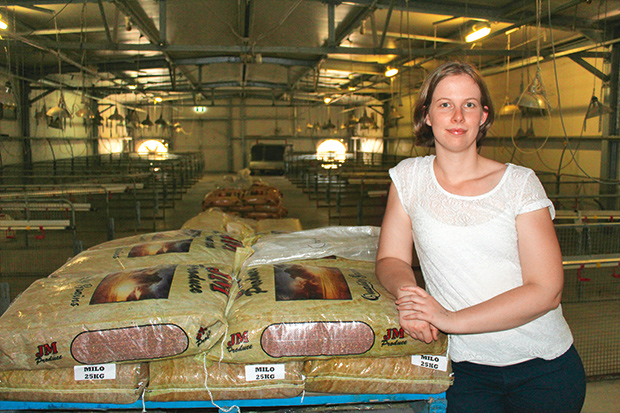How to grow bigger meat birds using wholegrains

Adding wholegrains to chicken feed boosts meat production efficiency.
Words: Nadene Hall
Dr Amy Moss of the University of Sydney’s Poultry Research Foundation found that replacing some of the ground grain in chicken feed with wholegrains such as wheat improved their digestion and how efficiently they produced meat.
Chickens use the muscular gizzard to digest feed.
“We traditionally feed poultry pellets of finely ground ingredients,” says Amy. “Chickens fed these diets don’t use their gizzards and so these organs become very flabby.
“If you add more wholegrains to chickens’ diets, their gizzards get a workout, and just like us when we work out, the gizzard gains more muscle.”
As the fitter gizzard grinds up the feed, it stimulates more gastric juices which lead to the chicken producing more meat per kilo of feed eaten.
“I found that by replacing 30 percent of ground grain with wholegrain, the chickens produced 7.7 percent more meat per kilo of feed eaten,” says Amy. “And it also reduced the cost of milling and making the feed.”
New Zealanders eat around 40kg of chicken each per year; Australians eat around 47kg.
“If more chickens around the world were fed wholegrains, we could meet the protein requirements of roughly 114 million more people, equivalent to the population of Australia nearly five times over,” says Amy.
“These qualities also make poultry an impressive candidate for improving food security in developing countries, particularly if we can make meat production even more efficient.”
Amy hasn’t tested her ideas on laying hens but says it’s likely that they’d also benefit from whole grains in their diet.

HEDGEROWS FOR HEALTH
Planting hedgerows in a flock’s free range area may help certain chicken breeds to grow faster, and increase their immune response to better enable them to fight off pathogens.
A research team from Oregon State University (OSU) bought 80 Cornish cross and 80 Red ranger broiler chicks. Half of each breed had access to pasture with a hedgerow, and half had no access to a hedgerow.
The researchers tracked two main factors:
• rate of growth, which was measured by weekly weigh-ins;
• immune response, measured by looking at white blood cell counts from weekly blood samples.
Cornish crosses with access to a hedgerow showed a modest increase in the speed of growth; Red rangers showed a slightly improved immune response.
The researchers hypothesized the improvement in weight gain was thanks to the decrease in heat stress due to extra shade. With the Red rangers’ immune response, they believe it’s possibly because they were eating more insects and plant matter in the hedgerow.
Love this story? Subscribe now!
 This article first appeared in NZ Lifestyle Block Magazine.
This article first appeared in NZ Lifestyle Block Magazine.
